Posts in category Uncategorized
Everyone please fasten your seat belts. Turbulence ahead for Renton’s Airport.
Aviation is the largest sector of Renton’s economy, directly providing over a third of all Renton jobs and indirectly creating many of our other jobs. Along with living-wage paychecks, our aviation businesses pay taxes which keep our city and schools succeeding.
Our 100-year-old downtown and surrounding neighborhoods are equally critical to Renton. Our downtown represents our identity and our history, and our city has to have livable neighborhoods.
In the early 1990s, open conflicts between airport users and nearby neighborhoods were commonplace. In my early years as council member, I witnessed hostilities over engine tests, flight schools, helicopters, seaplane noise, jet centers, and flight patterns. In 2001 a controversial jet center proposal packed our council chambers with frustrated residents, and we took steps to create sustainable peace. We created the Renton Airport Advisory Committee (RAAC), appointed with representatives from the airport and neighborhoods, to serve as a sounding board for the airport. The RAAC members worked hard to build bridges, getting neighborhood reps into airplanes and airport reps into backyards, to understand each other’s perspectives. They also implemented voluntary steps to reduce noise. While there are still occasional neighborhood complaints about the airport (mostly single-engine planes over neighborhoods), the RAAC deserves enormous credit for establishing peace and understanding among residents and airport stakeholders.
New water taxi could carry Renton residents to UW in 18 minutes, regardless of traffic conditions
For more than 12 years I have been trying to help get Renton a water taxi connection to Seattle, Bellevue and other cities on Lake Washington. We actually had a pilot program implemented in 2007, and then we lost funding before service ever began when the great recession hit later that year.
I kept the faith and continued to push for water taxi service in the many regional transit forums I attend. Needless to say, I was delighted last year when the owners of Renton’s Southport announced they would privately sponsor water-taxi service between Renton and Seattle, open to the public, for an expected fare of $8.
Many more people will soon call Downtown Renton home
Comments on my previous blog post:
Hi Randy, I’m glad to see you’re updating the blog again! Can you provide an update on the Cedar River Apartment Project and VIA 405 Apartment project and when we can expect those projects to start? I’ve found that I’m enjoying downtown more and more with Melrose, Boon Boona Coffee and other great shops. I also noticed permit application for renovating the old JC Penney’s building into lofts and retail. That will be great! (also)…an update on the 200 Mill Ave S Redevelopment and what’s going on with that?
Thank you for the question Philip!
We are about to experience a housing boom in both our historic downtown and in the Renton Village area near the Red Lion Hotel as a result of job growth in Renton, strong population growth in our region, sky-high real estate prices in Seattle and Bellevue, and improved transit in Renton.
Historic Downtown Projects:
Cosmos Development is working to build a new mixed use apartment/retail project, shown above, at 200 Mill Avenue. The project will tear down the 1960’s era former city hall building and put a river-front public park in it’s place.
I’m running for Mayor!
My family and I are very excited to announce that I am officially running for the the office of Mayor of Renton!
This position is an open seat, as Mayor Law has announced his retirement at the end of this year. As the senior Councilmember, I will bring over 25 years of experience as a Renton Councilmember to this role, including five years as Renton Council President and another five years as Council President Pro-Tem. I have chaired every council committee, and have substituted for the Mayor on many occasions. I have worked with four Renton mayors in my decades on City Council.
I also bring 33 years of management and engineering experience from my career at the Boeing Company from 1984-2017. Early retirement from Boeing has afforded me the opportunity to serve Renton residents in this new role.
Over the years I have been instrumental in bringing us the Landing, downtown Piazza, Farmers Market, Southport, 405/167 improvements, street and sidewalk improvements, the Henry Moses Aquatic Center, the Neighborhood Program, modern fire and police stations, the off-leash dog park, expanded municipal arts (including the new rooftop dragon!), and many other new parks and libraries. I’ve represented Renton in many regional forums including the I-405 Executive Committee, Metro Regional Transit Committee, and Salmon Habitat Recovery. I’m currently collaborating with the Mayor and council colleagues on downtown and highlands revitalization projects, creating a Benson Hill Community Center, building a more inclusive city, adding new police officers, building a new police training center, and working to reduce traffic congestion, while minimizing costs to homeowners by expanding Renton’s retail base.
As Mayor I will bring the same enthusiasm, open-mindedness, collaboration, and desire to hear from the whole community that I am known for on City Council. I promise a smooth and collaborative transition of leadership, followed by building on our successes toward an even brighter future for all of us.
Main Street is the first of many; one-way street downtown is converted back to two-way
Above: The view down main street from City Hall. The street was already open to two-way traffic in the foreground, but was closed to northbound traffic North of the Veterans Park in the distance. (All traffic was forced to turn right just past the three story building on the right side of this photo –where an orange construction sign can be seen on the sidewalk. This traffic can now also go straight.)
From a meeting room in City Hall this morning, I caught the scene as our Transportation team opened up the north end of main street to two way traffic for the first time in half a century. Motorists seemed unsure of themselves as they tentatively drove in new directions and tried some new turning movements. This was the first of several one-way to two-way street conversions we are planning in the coming years to give our downtown a more livable environment and make it easier to navigate.
This street conversion will be followed by similar changes on Williams and Wells, and ultimately Second and Third Streets in future years if we can secure the necessary funding. The conversions require updating of signals and intersections to latest standards, so the cost to eliminate all one way streets in Renton is in the tens of millions of dollars. We’re hoping to focus on the easiest and most important ones first, and obtain much of this money through state and federal grants, existing transportation revenue sources, and extra sales tax revenues resulting from increased vitality of downtown businesses as we improve the environment.
We’re planning on accompanying the changes with wider sidewalks with outdoor dining, diagonal parking (where possible), and enhanced landscapes.
To help nurture a thriving business environment, engineering designs will encourage pass-through traffic not to go through our historic downtown. For example, SR 900 has been moved off of Second and Third Street, and onto the newly widened Rainier Avenue and I-405.
I wrote a blog entry in 2011 with some of my ideas on downtown revitalization, and I described (with photos) how slowing down traffic, focusing on street frontages, and working together as a community dramatically transformed the downtown in my hometown of Livermore, California. That blog can be found here
Above: The new two-way section of Main street, in front of g.h.y. bicycle shop.
Above: A motorist headed east on Third Street tentatively makes a left turn onto Main Street, something that was not possible since the 1960s.
Above: Renton transportation experts monitor the stop signals and the control box, making sure the new traffic signals are working exactly as engineered to allow the new travel and turning directions.
Clarified in writing and signed in ink; eminent domain not to be used for Community Center river promenade plan
Six years ago Renton adopted a City Center Community Plan that created vision for the future of our downtown and it’s adjacent neighborhoods as envisioned by residents, businesses, and other stakeholders. This was the first of what will ultimately be 8, 9, or 10 plans covering our entire city and potential annexation areas.
The City Center Community Plan was one of the first plans created, along with Highlands and Benson, under our Community Planning program
The completed City Center Plan contains many excellent ideas, and the entire 165 page document can be found here HERE
There was one detail that raised concerns by some residents in the area, and it was brought to Council’s attention last year.
Section 8.3.3 of the plan includes discussion of a greenway/promenade near Cedar River, based on some notional sketches elsewhere in the plan. This section includes the language that “the City should work closely with property owners, business owners, and residents that will be impacted by zoning changes or potential land assembly.”
Some homeowners in the area became concerned that the City could be planning an eminent domain taking of their riverfront homes or property to accomplish this plan. When the issue came before City Council, the City staff explained this was not the intent of the plan, but residents remained worried. So to alleviate this fear and help these residents feel safe with the plan, council unanimously agreed to formally adopt a written amendment to the plan to clarify that eminent domain would not be used for this purpose. The statement went through our Planning Staff for drafting, our City Planning Commission for review and recommendation, and then came back to Council’s Planning and Development Committee for a formal recommendation to the council. We produced the report below, and council formally adopted it on Monday night.
I’ve been a consistent voice against eminent domain overreach, a topic which brought me into City politics 30 years ago. Please read this blog entry to learn more.
New I-405 to I-167 HOV connector is one step in a long-term plan to fix this major freeway intersection
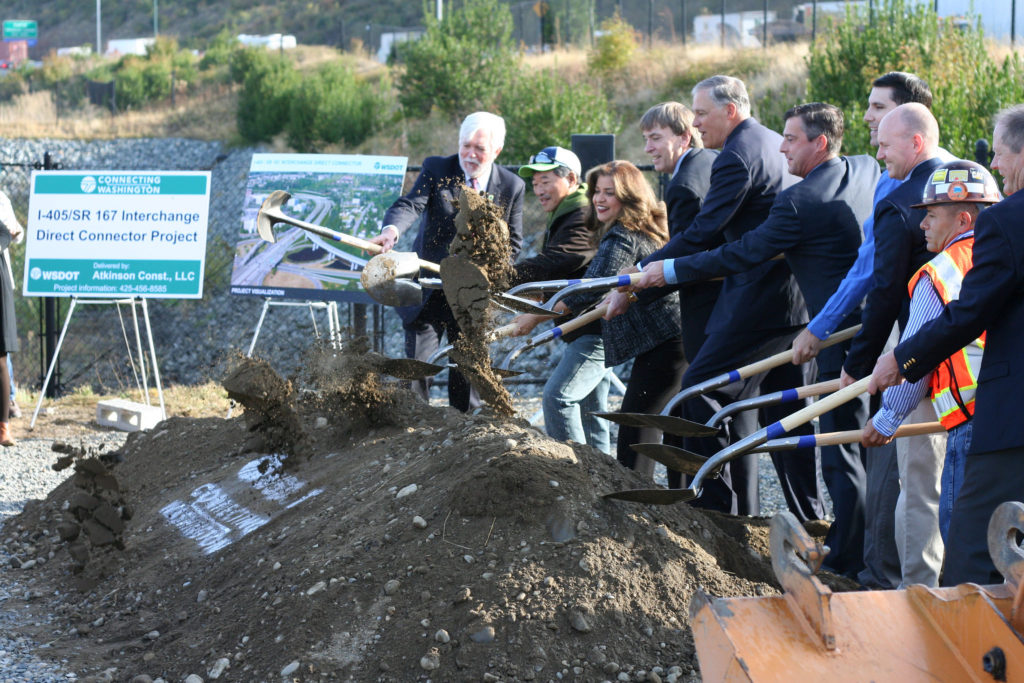 Breaking ground on the 405/167 HOV direct connection last year
Breaking ground on the 405/167 HOV direct connection last year
Most Renton residents are aware that a major construction project is occurring at the intersection of I-167 and I-405, bringing much-needed improvement to this overwhelmed intersection. But what is less well known is how the current project, the connection of the HOV lanes from I-405 to I-167, will fit into a larger project that may not be completed for another decade or two depending on when funding is available.
I’ve prepared this blog entry to help clarify the situation.
The original I-405/I-167 interchange makes use of four “clover leaves” to transfer motorists from one roadbed to another. It may be an appropriate design today for the crossing of two rural highways in a sparsely populated area. It was not too bad in 1965 when it went into service. But this design requires cars to slow to about 20-25 miles an hour to make the curves of the clover leaves and is not an effective design for a modern urban freeway connection that is moving tens of thousands of motorists per hour. As motorists slow to make the cloverleaf turns, they quickly form a queue that backs up onto the freeway, bringing traffic to stop-and-go conditions in which the road loses two-thirds of it’s carrying capacity.
The proper fix for this is to keep motorists moving at 45-50 miles per hour as they make the freeway connections, keeping traffic at it’s optimum carrying capacity. (Freeways carry the most cars per hour when motorists are moving at a steady 50 miles per hour or so; at lower speeds people will follow so close they can trigger a stop-and-go condition, which dramatically cuts carrying capacity, and at higher speeds like 65-70 good drivers will spread out so much for safety that the capacity drops.)
One of the challenges with making these high-speed connection ramps at the 405/167 intersection is that we have important Renton local access to the freeway at this location. Rainier Avenue/405 is used by tens of thousands of Renton motorists per day to get access to I-405 and 167. We are trying to join two major urban freeways and serve local residents all at the same location.
So the State Department of Transportation has been working with Renton to fix freeway flow AND preserve our local access to I-405. A solution has been identified. The final configuration of the new freeway is not funded and is not widely advertised, so I am sharing it here.
The final configuration, which I don’t expect to see for maybe another 10-15 years or so, will give Renton residents I-405 access via a “split diamond” interchange system, offering on-ramps to northbound I-405 via Talbot Road (a project we completed about 7 years ago), and access to southbound I-405 via Lind Avenue (a project that will mirror the Talbot Road interchange and be completed in the future.) The Talbot and Lind Avenue onramps will be connected to one-another via improved frontage roads. This final arrangement will eliminate three of the cloverleaves on I-405/ I 167, leaving only the leaf that handles the relatively low volume of Northbound 167 drivers merging onto South/West I 405.
The project in work now will not complete all of this work, but will be an important component that will add near-term relief. It has been engineered to support the final configuration.
The above project is the one in-work now (for which we held the ground-breaking above). The flyover ramp shown in the picture connects the HOV lanes from Northbound and Southbound 405 and 167. You can read more about this project here
The future final configuration will add direct connections for single occupant vehicles, and will look like the picture below. We will need to work with the state and federal government to secure more funding to complete this.
Future (indefinite date) completed I405/I167 interchange
Engineering layout of proposed new “split diamond” interchange, providing local access to I-405 from Lind Avenue and Talbot.
If you are interested in learning more about the final plan, you can go to this link.
Keeping I 405 and I-167 flowing is extremely important to Renton. In addition to needing these freeways to serve residents and businesses in our community, we also find our surface streets get seriously congested from cut-through traffic as out-of-town commuters look for ways to avoid these freeways on a daily basis. During peak hours, many of our streets have more pass-through traffic (neither originating or terminating in Renton) than local traffic.
New Vehicle Trespass Ordinance will give police a new tool in fighting car prowls
One of the considerations in making this crime a misdemeanor instead of an infraction is that infractions generally must be witnessed by a police officer to be enforced. An appealing aspect of an infraction is that if an infraction is witnessed by an officer, the officers testimony is generally sufficient to prove the infraction, making it easy to charge. On the other hand, if the only evidence is a citizen witness, the misdemeanor is better because the citizen testimony can be used as evidence in court (subject to cross-examination and other rules of evidence.) Misdemeanors also carry the threat of jail time for repeat offenders, so they are a more effective deterrent. (This element is a consideration in the vicious animal ordinance, as a supplement to the state dangerous dog statute, that we are working on in response to citizen testimony at a council meeting a few weeks ago. I’ll cover that in a future entry.)
So, please call 911 if you see someone that does not appear likely to have permission entering a vehicle, and tell the dispatcher you may be witnessing an illegal vehicle trespass. (The ordinance is fully approved by council, but will require a few weeks for publishing, so there may be a few weeks delay before the change in the law allows new prosecutions.)
I’m happy to be blogging again!
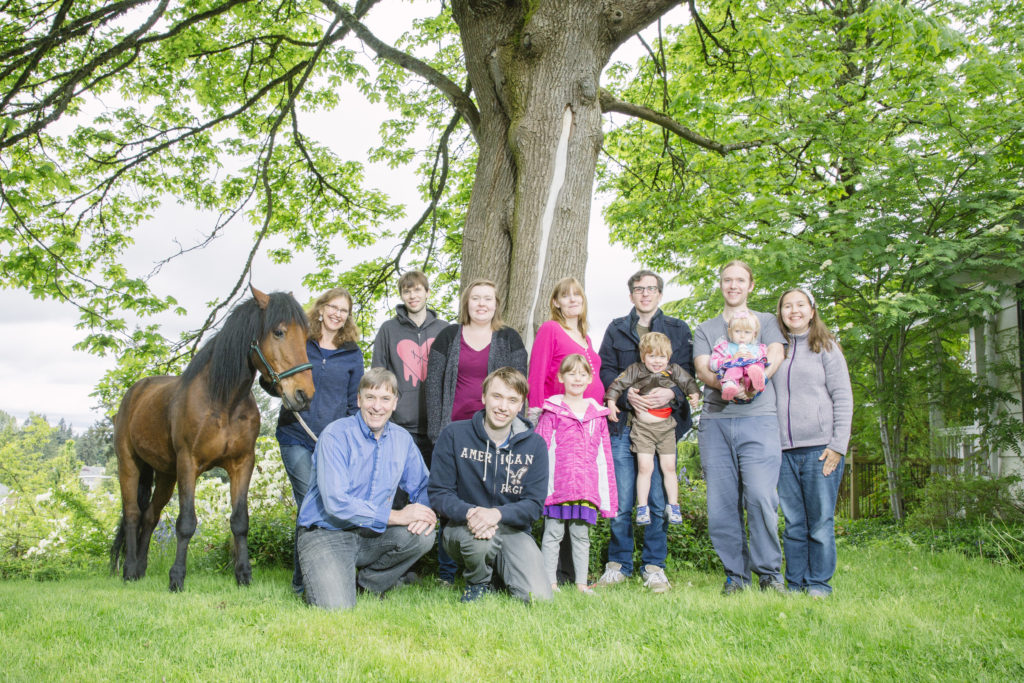 After a five-year break in blogging on this site, I’m delighted to be picking up where I left off. I can tell from the photos it has been a while- the little girl playing croquet in my previous blog entry is now the six-year-old standing in pink in the front-center of the photo above. (My wife, kids, daughter-in-law, son-in-law, grandkids, and horse Zeus round out the photo)
After a five-year break in blogging on this site, I’m delighted to be picking up where I left off. I can tell from the photos it has been a while- the little girl playing croquet in my previous blog entry is now the six-year-old standing in pink in the front-center of the photo above. (My wife, kids, daughter-in-law, son-in-law, grandkids, and horse Zeus round out the photo)
I am going to have the time to write again because….big announcement coming… as of July 21st, after 33 years, I am retiring from my day job as a Manager at Boeing. This change will give me additional time to dedicate to my growing family and the Renton Community. I’ve added two new grandchildren since my last blog entry, and one more is due any minute– yes, you read that right…any minute 🙂
Our City is engaged in some major redevelopment projects– on the lakefront, in downtown, in Renton Highlands, and elsewhere. We’re also working to build new parks and planning an additional community center. Meanwhile, the State Department of Transportation is in the midst of a major widening of I-405 through our city, with much-needed fly-over ramps that will connect I-405 and I-167. We are also facing new challenges, such as growing homelessness exacerbated by high real estate prices, a nationwide heroin epidemic, ever-increasing traffic congestion, and general uneasiness created by division in the other Washington.
And of course, we’re also kicking off our 2017 campaign season, welcoming new participants to the dialogue and generating many new topics to discuss.
I’ll write a new entry soon, so please keep checking back. Meanwhile, please feel free to browse the 1600 entries below, along with the 11,000 user comments, to refresh your memory on previous topics we discussed here at randycorman.com.
Renton Water Fluoridation will be debated at tomorrow’s Committee of the Whole; Center for Disease Control data on safety is far from definitive
The fluoride debate has has come back to Renton. We’re receiving emails and letters from citizens on both sides of this issue, and both sides are passionate. The issue will be dabated in our council chambers tomorrow at 6:00, during our Committee of the Whole meeting.
The proponents of Renton water fluoridation have generally been arguing that fluoridation has been shown safe and effective at reducing cavities, that the science was settled years ago by thousands of studies, that fluoridation helps everyone have fewer cavities especially the poor, that prominent organizations and individuals for decades have endorsed community water fluoridation, that the US has been moving toward more and more community fluoridation, that fluoridation was considered by the Center for Disease Control to be one of the 10 greatest health achievements of the 20th century, and (counter-productively) that opponents of fluoridation are conspiracy theorists.
The opponents of Renton water fluoridation argue that the science does not in fact say fluoride is safe for everyone nor is the science complete, that fluoride effectiveness when swallowed is significantly less than when applied topically, that fluoride in the water supply has not been shown in double-blind studies to reduce cavities, that fluoride should not be given to people without informed consent, that it is a “drug” that is being forced upon everyone in the entire community in an uncontrolled dose (dependent on their water consumption and the use of other fluoride products) and with no regard to their age or medical status, that far more nations on earth have rejected community water fluoridation than adopted it due to the reasons given above, and (tangentially) that it is a poison in high concentrations.
I’m paying extra close attention to this debate this time. While I grew up in the 60’s believing fluoride was safe for everyone, I have increasing doubts after reading our government’s own documents on the topic, and two years ago I proposed lowering our fluoridation level after the EPA reduced its recommended level (which we subsequently did– click for details).
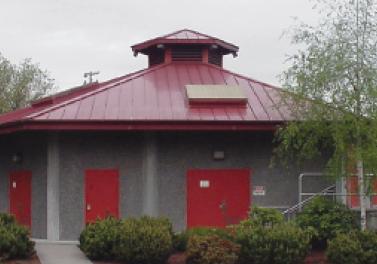
Rentom’s Liberty Park Wellhead, one of several facilities in Renton where water is filtered, treated, and fluoridated
As another piece of data, a few years ago I installed a reverse osmosis filter for my daughter to remove fluoride from her water after she positively correlated painful and expensive gastrointestinal issues it to fluoride hypersensitivity– a condition recognized by the National Academy of Science (see below). Prior to cutting her fluoride intake, her condition had led to over $600 of prescription medicine per month, with an annual $10,000 colonoscopy, and a risk of possible surgery to remove her colon. After isolating fluoride as the cause, which she did by drinking water exclusively from her husband’s family well outside of Renton and then she verified by living symptom-free in Japan (where they don’t fluoridate and few products contain fluoride), she has reduced her medical expenses and symptoms to zero by eliminating fluoride from her diet. This experience did not make me convinced I needed to eliminate fluoride from the water supply, but it left me with an open mind on the topic.
In an age of information, diversity, and respect for personal choice, water-fluoridation opponents (like my daughter) are not just fringe voices anymore. In the last two months, overwhelming citizen coalitions in the two largest unfluoridated city’s in America, Portland Oregon and Wichita Kansas, have just made it clear to their leadership that they want a voice in this debate– Wichita (population 384,000) just rejected fluoridation by 59% to 41%, and Portland Oregon (population 593,000) just got the issue put on a public ballot as a referendum (collecting about 43,000 signatures in 30 days when less than 20,000 signatures were needed) after their city leaders voted to fluoridate their water. While some may say these citizens are recklessly bucking the trend set by larger US cities over the last few decades, others argue they are following the lead of the world’s greatest international cities that have rejected community fluoridation such as Tokyo, Paris, London, Stockholm, Copenhagen, Rome to name just a few.
On November 16th, as I was trying to make sense of all of this, I received an email from our City Utilities department sending me to an official CDC website for definitive information on Fluoride.
The email read: “Please find below a link to the CDC’s website on fluoride. There is a lot of very good information on fluoridation on this site. The CDC touts fluoridation of public water supplies as one of the 10 best health innovations of recent times. ” The email contained a link to the CDC website. CDC Community Water Fluoridation
Okay, I thought. When controversy strikes, I should follow the process. Hence, I followed my city staff’s recommendation, went to the CDC site, and familiarized myself with the safety studies.
On the Center for Disease Control Site, I clicked Safety, then National Academy of Science, and then their 2006 report for EPA, per the tree below:
The 2006 NRC Report on Fluoride in Drinking Water: A Scientific Review of EPA’s Standards
And I found something I never expected. Far from showing that the science is resolved, the CDC site directs readers to a study prepared for the EPA by the National Academy of Science in 2006 (seven years after the CDC proclaimed fluoride one of the greatest health achievements of the 20th century); the National Academy of Science Study says there may be linkages between community water fluoridation and reduced brain development (lower IQ), bladder cancer, Alzheimers, diabetes, auto-immune disease, gastro-intestinal illnesses, brittle bones, accute florosis, downs syndrome, and a host of other problems. The CDC also says on their website that while originally community water fluoridation was thought to reduce cavities by 50% to 60%, today they now believe the benefit may be (18%-40%) reduction in cavities because of all the other sources of fluoride.
This data from CDC struck me as a LOT of risks of EXTREMELY serious illness, reduced brain functioning, and pain and suffering– to get as little as 18 % reduction in cavities, and I expect readers will want to see it for themselves. As you read through it, remember that this is the data from the people SUPPORTING water-fluoridation, the best thing they can find to assert it is safe. I have copied the link path below, along with key findings and recommendations from this report.
Here is a sample from the report by the National Academy of Science Report which the CDC references to claim fluoride is safe:
“…it is apparent that fluorides have the ability to interfere with the functions of the brain and the body by direct and indirect means. To determine the possible adverse effects of fluoride, additional data from both the experimental and the clinical sciences are needed.”
“Fluorides also increase the production of free radicals in the brain through several different biological pathways. These changes have a bearing on the possibility that fluorides act to increase the risk of developing Alzheimer’s disease.”…”Studies of populations exposed to different concentrations of fluoride should be undertaken to evaluate neurochemical changes that may be associated with dementia. “
“The conclusion from the available studies is that sufficient fluoride exposure appears to bring about increases in blood glucose or impaired glucose tolerance in some individuals and to increase the severity of some types of diabetes. In general, impaired glucose metabolism appears to be associated with serum or plasma fluoride concentrations of about 0.1 mg/L or greater in both animals and humans… A comparison … will show that the 0.03-0.1 mg/kg/day range will be reached by persons with average exposures at fluoride concentrations of 1-4 mg/L in drinking water, especially the children.”
“Further effort is necessary to characterize the direct and indirect mechanisms of fluoride’s action on the endocrine system”
“The primary symptoms of GI [Gastro-Intestinal] injury are nausea, vomiting, and abdominal pain. Such symptoms have been reported in case studies and in a clinical study involving double-blind tests on subjects drinking water artificially fluoridated at 1.0 mg/L.”
“It has long been suspected that fluoride, even at concentrations below 1.2 mg/L in drinking water, over the years can increase the risk for renal calculi (kidney stones). Research on this topic, on humans and animals, has been sparse…”
“Genotoxicity tests indicate the potential for fluoride to cause mutations, affect the structure of chromosomes and other genomic material; affect DNA replication, repair, and the cell cycle; and/or transform cultured cell lines to enable them to cause tumors when implanted into host animals.”
“An association of uterine cancer (combination of cervical and corpus uteri) with fluoridation was reported by Tohyama (1996), who observed mortality rates in Okinawa before and after fluoridation was terminated, controlling for sociodemographics. This analysis is a follow-up of the positive results from a previous exploratory analysis that comprised a large number of comparisons conducted by this researcher with the same data set.”
“The combined literature described above does not clearly indicate that fluoride either is or is not carcinogenic in humans.”
“Further research on a possible effect of fluoride on bladder cancer risk should be conducted.”
“Additional research is needed on fluoride concentrations in human bone as a function of magnitude and duration of exposure, age, gender, and health status.”
“The current MCLG was designed to protect against stage III skeletal fluorosis [includes increased risk of fracture]….the committee judges that stage II [which is reached with lower levels of fluoride] is also an adverse health effect, as it is associated with chronic joint pain, arthritic symptoms, slight calcification of ligaments, and osteosclerosis of cancellous bones.”
“On the basis of this information, all members of the committee agreed that there is scientific evidence that under certain conditions fluoride can weaken bone and increase the risk of fractures.
“High-quality studies in laboratory animals over a range of fluoride concentrations (0-250 mg/L in drinking water) indicate that adverse reproductive and developmental outcomes occur only at very high concentrations. A few studies of human populations have suggested that fluoride might be associated with alterations in reproductive hormones, fertility, and Down’s syndrome, but their design limitations make them of little value for risk evaluation.”…”A reanalysis of data on Down’s syndrome and fluoride by Takahashi (1998) suggested a possible association in children born to young mothers. A case-control study of the incidence of Down’s syndrome in young women and fluoride exposure would be useful for addressing that issue. “
Looks like a lot of risk and uncertainty for an 18% reduction in cavities.
When we go into council chambers tomorrow night, and ask our followup questions of the professionals, I won’t be interested in hearing name dropping about a Surgeon General in the Reagan Administration who thought fluoridation was a good idea 30 years ago. In general, I will have little interest in recommendations from three or four decades ago– too many of the old recommendations have been invalidated through the years. I want to hear scientists address the issues raised by EPA, CDC, and National Academy of Science in the 2006 study posted on their own website.
Thanks for reading. Please feel free to give my your input about this report in the comment section below.
Croquet at Renton’s Riverview Park; showing off my granddaughter
My granddaughter is getting bigger. Here she is at our 11-acre “Riverview Park,” (a few hundred feet from Cedar River) ready to challenge me to a game of croquet.

Now that the library election is behind us, I plan to mix up my blog entries with more varied topics. Next up…trees!
Last night’s council meeting; 3-minute speaker time-limit reversed and sent back to Committee of the Whole
Last night’s council meeting was a long one, lasting about two and a half hours. One of the main issues before us was the proposed 3-minute limit to audience comment (down from five minutes.). This decision was reversed last night unanimously by the council, leaving the five minute audience comment that everyone has become accustomed to. The subject has been sent back to Committee of the Whole, as there are still language issues in the policy that some members would like to see better clarified.
There was also discussion about go-forward planning for the Cedar River Library renovation, and some other issues that brought out comment at last night’s meeting. Jenny Manning, Editor of Renton Patch, was in attendance and I’m sure in the coming days she will be posting more detailed stories about specific topics that arose.
What do YOU think should be done to revitalize downtown? A thoughtful reader kicks off the discussion with some great comments!…
Note: I received a comment on my previous blog that is perfect for starting a new topic. The commenter, who goes by the moniker “Union Hat”, provides some interesting and well-thought-out suggestions for making improvements to downtown. His ideas already started a dialogue, so I captured it below his comments as well. Please review Union Hat’s suggestions, add your views on whether they would work, and add your own ideas! Thanks to Union Hat for this and other great comments, and thanks to all of you readers for your attention and ideas.
____________________________________________________________________________
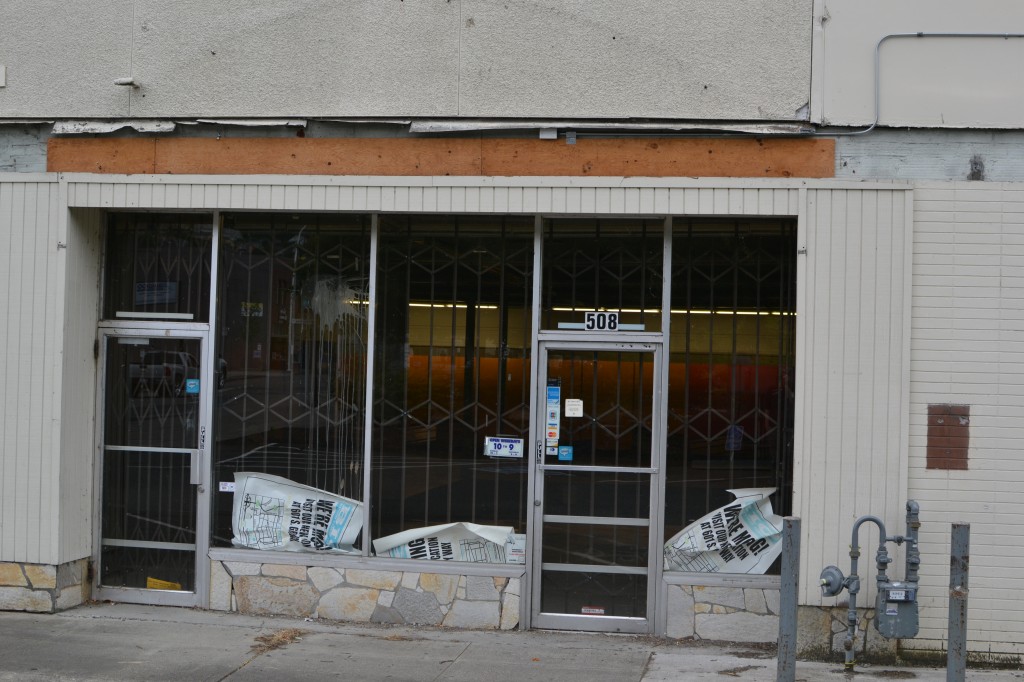
Pictured: The storefront west of the Piazza, where a new library had been proposed to replace this tired building. While voters rejected moving the library from it’s over-the-river location, most citizens I have talked to feel it is worthwhile for the council to focus on further revitalizing this section of downtown Renton. I have heard many good ideas proposed
(From Union Hat)
The vote on the library location is in: Renton Wins!
Cedar River Library lovers get to keep the location we all have appreciated for nearly half a century. Awareness of the need for real revitalization in the oldest part of downtown Renton has not been this great since the local improvement district was created in the late 60’s.
There is still lots of work to do, but we have a chance to get things moving in a productive direction. Here is a To Do List to jumpstart the creative dialog between Economic Development Department, the City Council and the downtown business owners. Please add to my relatively random list of ideas.
Pass an ordinance requiring a private kitchen and bath for rented rooms in the historic district and providing tax credits for renovated office space.
Provide property tax credits to owners who strip off all of the ugly 1970’s upgrades to the building facades and/or restore the brick and stone exteriors and windows to their original design using energy efficient materials. For buildings constructed after 1920, encourage modifications that harmonize the visual appearance of the exteriors with the buildings constructed between 1900 and 1915.
Replace all of the old, ugly and increasingly unsafe sidewalks on S 3rd between Main and Smithers. Replace the odd gutters at the corners. Choose a concrete finish that is safe and durable, but reminiscent of the original wood sidewalks or Renton brickworks sidewalks or both. Include modest midblock sidewalk bump-outs for easier pedestrian street crossing and sidewalk vendor kiosks. Include utility hookups.
Replace the odd 1970’s street lighting and the remaining corner mounted traffic signals. Choose a pole and lamp style reminiscent of early 1900’s gas lamps. Consolidate the little hand holes, and improve the underground conduits to add capacity and provide a building entrance to every structure in downtown. This will allow connection of very high speed fiber to the second story offices. Combine superfast Internet with low cost office space on the southern end of the eastside tech corridor and you create a high-tech startup incubator.
Realign SR-900. The Historic District along S 3rd suffers from far too much vehicle traffic and too little foot traffic in part because they are in direct conflict with each other. By extending MLK way diagonally through the Safeway parking lot to connect with S 2nd and doing a modest widening of S 2nd there could be nearly the same traffic carrying capacity on S 2nd as there is now using both S 2nd and S 3rd.
Reduce S 3rd to a single west bound lane with diagonal parking along both sides. Provide traffic calming planters at each intersection with small street trees and low growing vegetation. Consider stained concrete intersections as we have in The Landing. The finish could reflect roadway bricks made at the Renton brickworks.
Bathe the historic district in very high speed, free wi-fi. Include Rainier, The Landing and the Ikea Shopping District. Perhaps Sunset between N 10th and N 12th and parts of N 4th should be included. Municipal wi-fi is not nearly as cool as it used to be, but is increasingly expected as part of any desirable destination. Very young tech startups might ride on free wi-fi for the first year.
DO NOT spend 10 million dollars to renovate the Cedar River Library. Do an essentials only renovation for about $2 million. If KCLS insists that there needs to be an entrance near the south parking lot, put an attractive rain roof over the pedestrian bridge leading from the parking lot to the existing entrance. When the economy improves a more extensive remodel and expansion to a Ragional library can be considered.
DO spend about 2 million renovating the existing Big 5 structure and relocate the Police Patrol Operations Division into the building for at least 5 years. There has been talk of building a new City Hall building in the old downtown for several years. That is not going to be affordable for a decade (never if we get Barack’d again on Nov. 6th). We can do some stimulus and a lot of crime prevention by putting the police who chase criminal’s right into the belly of the beast. Once West Hill annexes, that location will be a more central location for most of the high crime areas in Renton.
Vacate Mill Ave. S between Bronson Way and S 3rd and expand the parking for the Library and the Museum. With the expanded traffic volume on S 2nd/Bronson the Mill and Bronson intersection will no longer be viable anyway. Put a large bus stop bump out on Bronson where Mill used to be. Include a large sign identifying the KCLS library.
Get KCLS to pay for including the Cedar River and Highlands Libraries in the Renton Wayfinding sign system. They promised us some signs, we should hold them to their promises or they will continue to have no reason to respect Renton.
Yes the projects described above will cost something like 200 million dollars and it will be difficult to amass that much cash. It does not need to be done all at once. Something like 15% to 20% must be local matching funds, but once you have the 30 to 40 million budgeted, it is possible to get federal, state and county improvement grants that could provide practically all of the remaining money needed to actually revitalize Renton. The 10 million we dumped into the parking garage might have attracted 50 million outside dollars. We could have SR-900 realigned already if we had leaders with a little less impatience and just a little more vision and faith in our community.
Get the Administrator of the Community and Economic Development Department to move into town. Strongly encourage the other department heads to live here as well. Their perspective needs to be that of a participant, not a detached management consultant.
If you don’t like my crazy ideas, please post some of your own. It is time to come together to move Renton ahead.
Reply
_______________________________________
Commment to above, from RentonBen
I like all of them – a series of rational improvements, and no expensive boondoggles.
________________________________________
Follow-on Comment from Union Hat
OK Ben,
How about this? Annex West Hill and extend Renton level police service west to Seattle. Cleaning up crime in downtown Renton needs a regional approach and the King County Sheriffs don’t get the funding they need to hold up their end of the deal. If we are going to beat the crime in Renton and West Hill, we need to join West Hill to Renton first.
Still rational?
____________________________________
Readers, please join this discussion with your ideas by clicking on the comment button!
Renton’s $250,000 Gateway Park, including many mature trees, would be torn out for Piazza Library
Many Renton residents are not aware that the taxpayer-funded Gateway Park west of the Piazza, including mature trees and landscape, will be torn out if the Big 5 (Piazza Site) is chosen for the new library. This is because the Gateway Park square footage must be combined with the former Big 5 parking lot and the former Big 5 building in order to accommodate the new building and it’s entryway. The landscape and trees are finally reaching maturity in this park. Taxpayers paid approximately $250,000 to have this designed and landscaped around 1999, and to have an elaborate irrigation system installed (which has been helping the plantings grow and thrive for twelve years). Like the parking in the area, the cost of this park has never been included in estimates for the cost of the Piazza Library. If land purchases, off-site parking, and the cost of this park were included in the Piazza library cost, then the total price of this option would be between 11 and 12 million dollars, compared the the 10.1 million estimated for remodeling of the Cedar River Library.
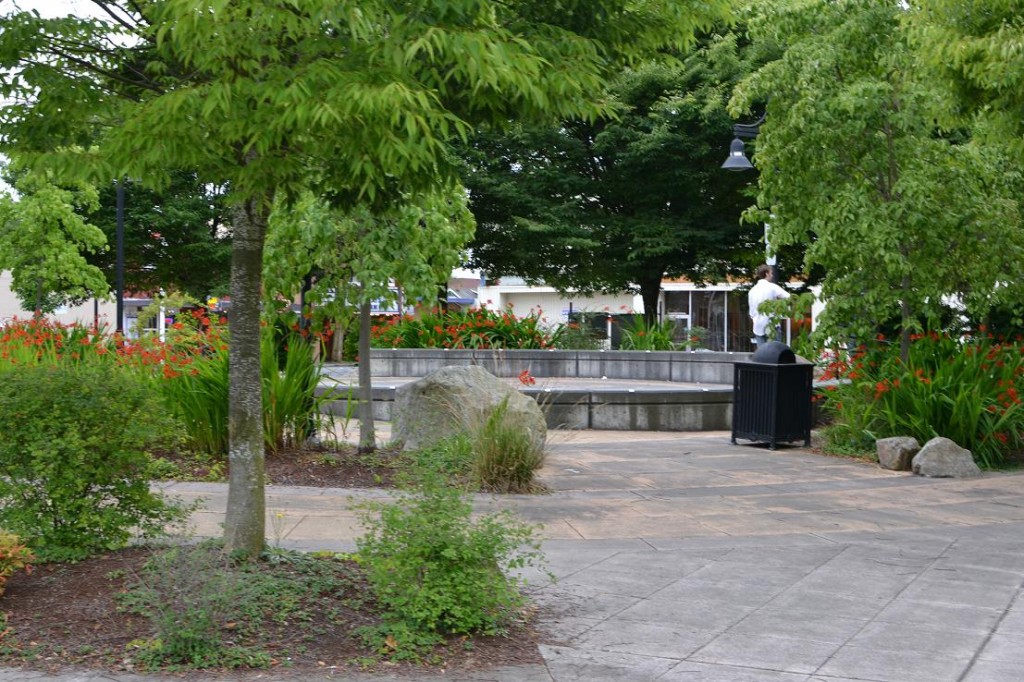 If the Piazza Library site is chose, there will be an outcry when these trees get cut down. (Many Renton citizens have been complaining already about tree-losses downtown, primarily due to widening of nearby Rainier Avenue.)
If the Piazza Library site is chose, there will be an outcry when these trees get cut down. (Many Renton citizens have been complaining already about tree-losses downtown, primarily due to widening of nearby Rainier Avenue.)


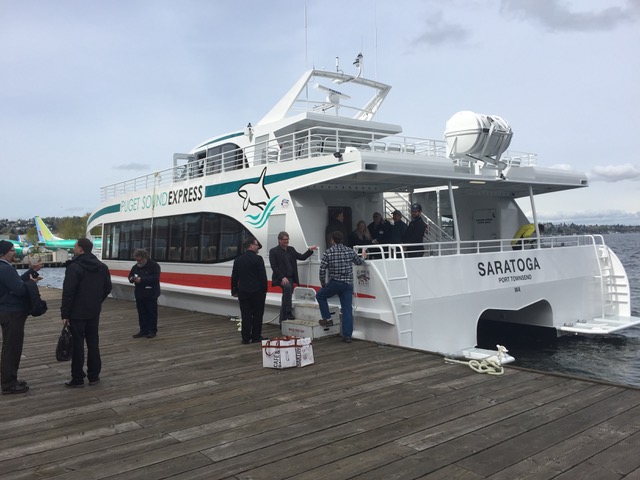
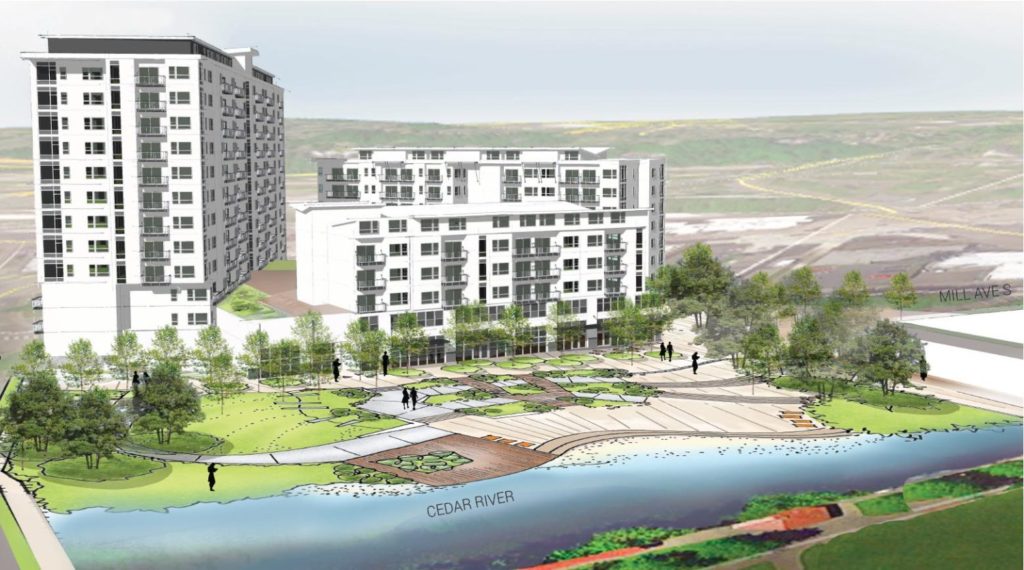
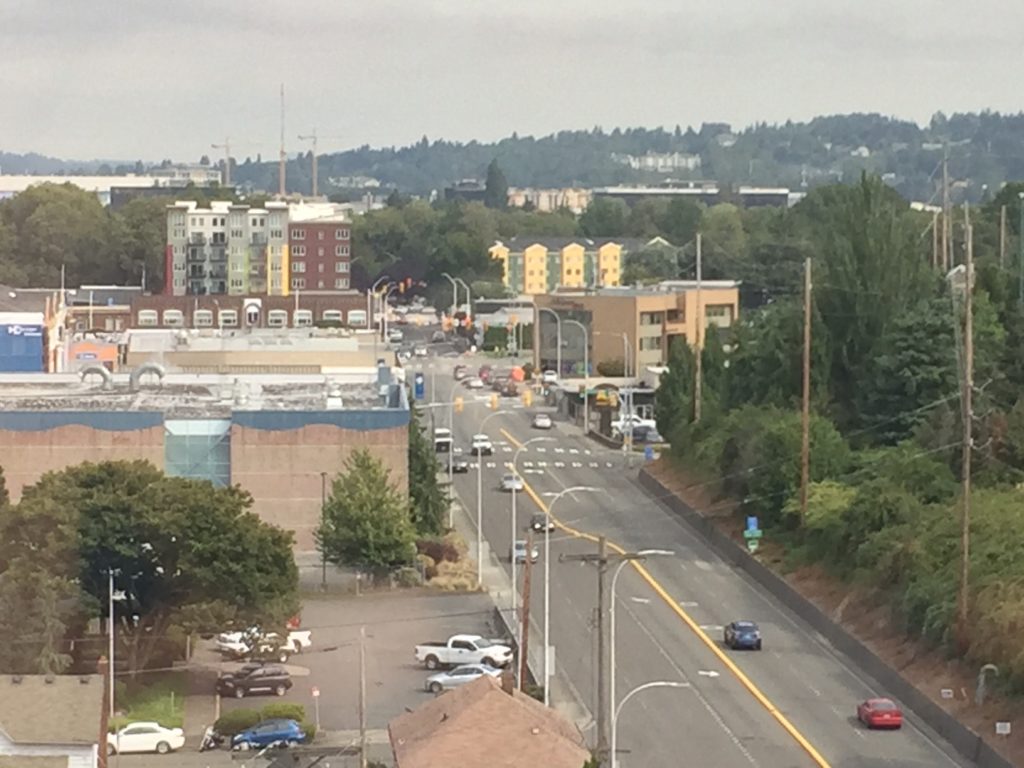
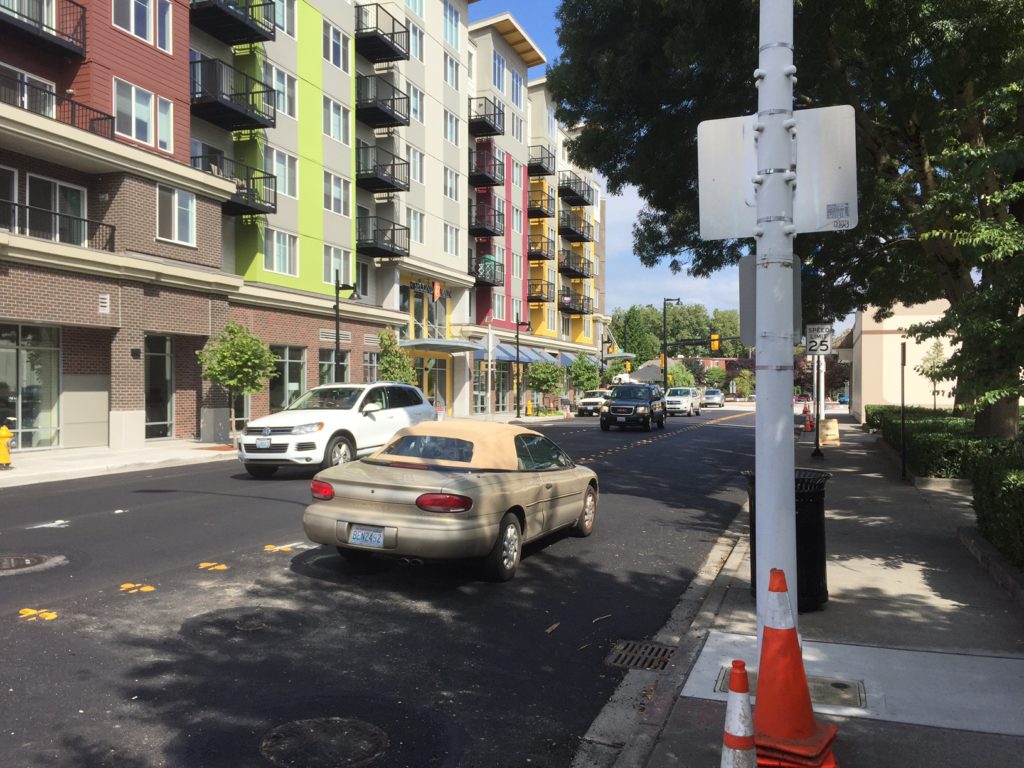

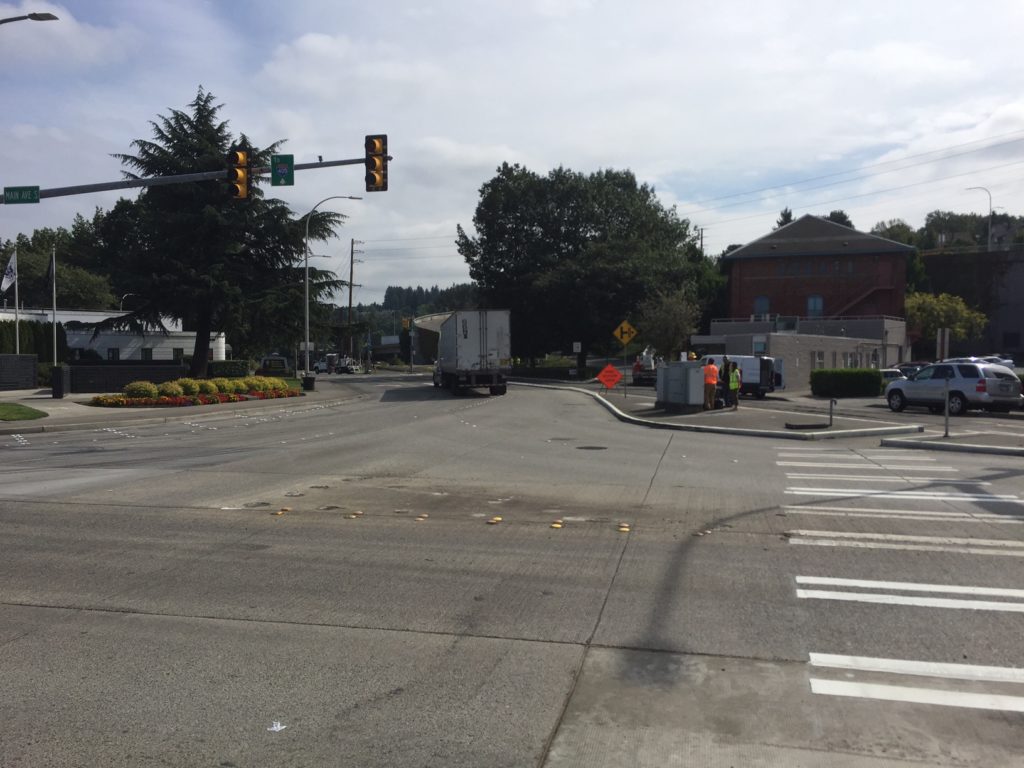
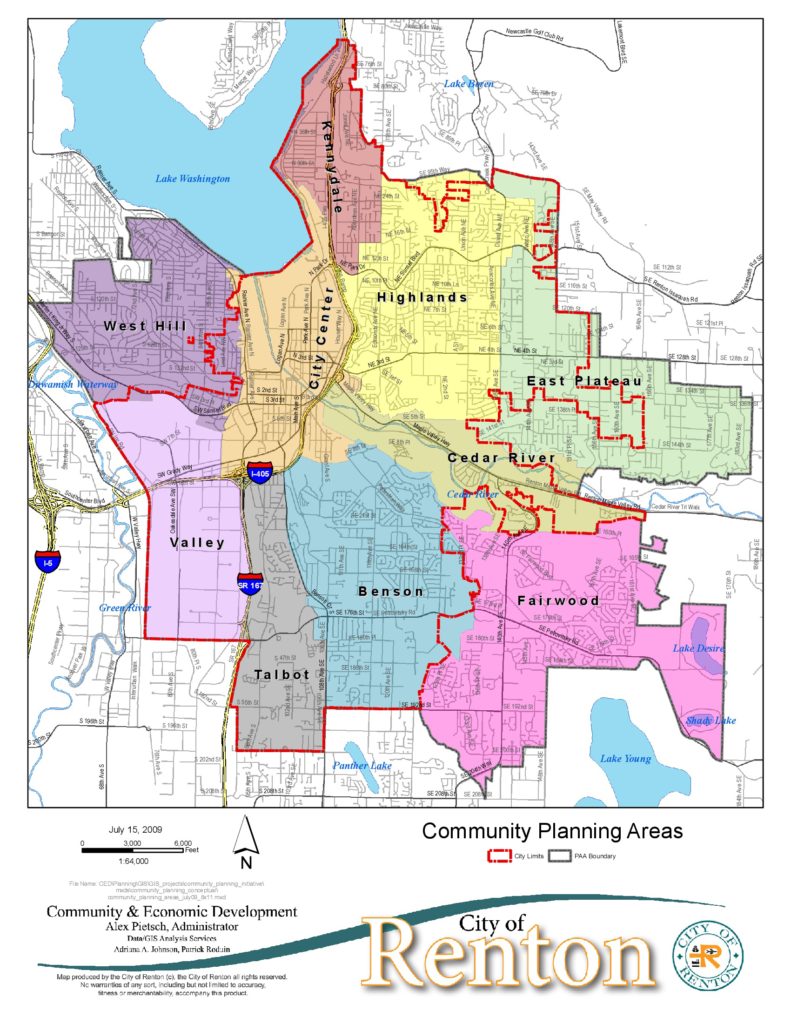
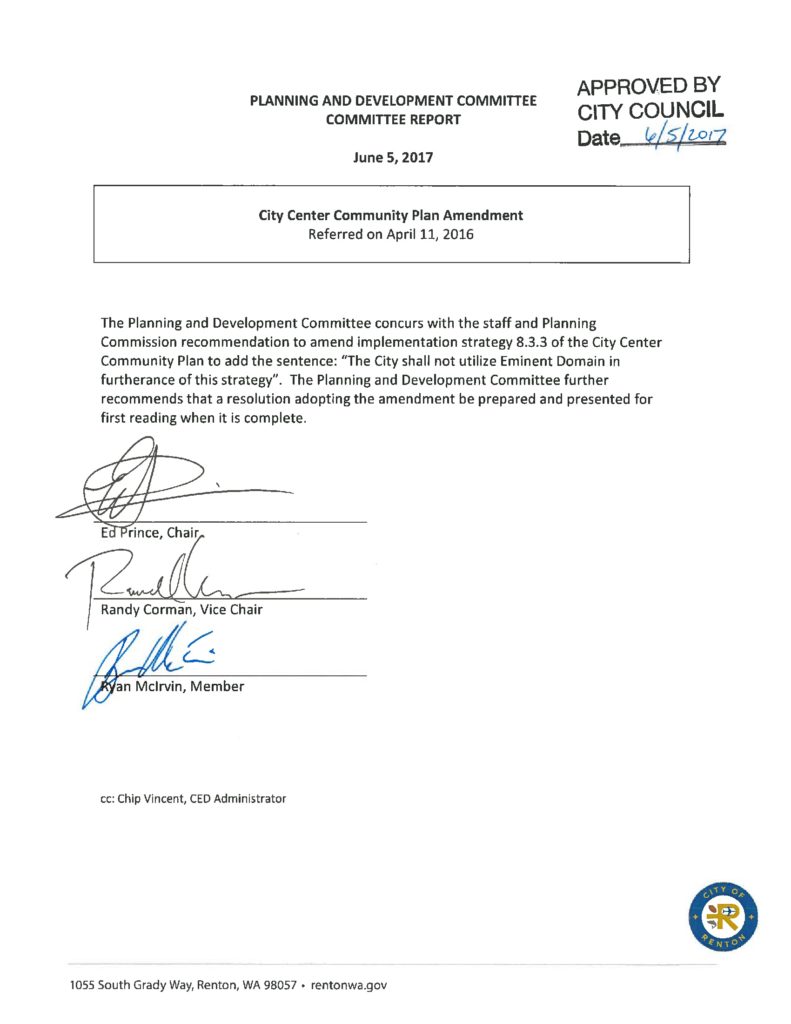



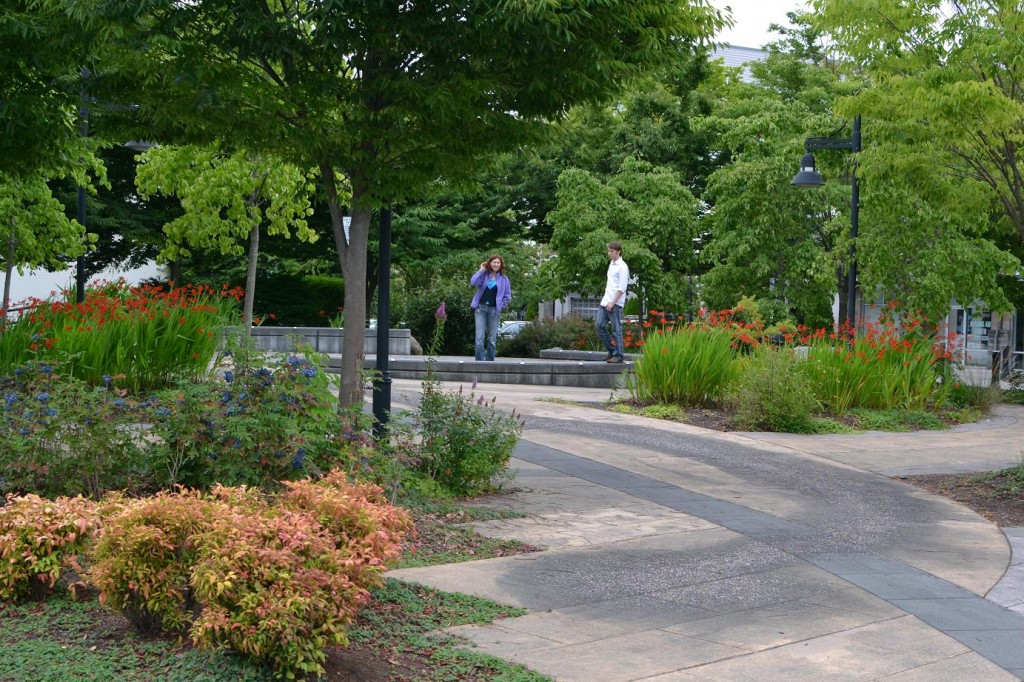
Recent Comments